Protists - Gen Bio 2 exam 1
1/25
There's no tags or description
Looks like no tags are added yet.
Name | Mastery | Learn | Test | Matching | Spaced |
|---|
No study sessions yet.
26 Terms

AMOEBA - unicellular heterotrophs, pseudopodia for movement, found in stagnant watery environments
PARAMECIUM - (animal-like) ciliated heterotroph, unicellular, found in freshwater
SPIROGYRA - multicellular filamentous green algae, photosynthetic autotroph, spiral shaped chloroplasts
VOLVOX - multicellular autotroph, flagellated, colonial, parental colonies surround & protect daughter colonies (primitive form of parental care)
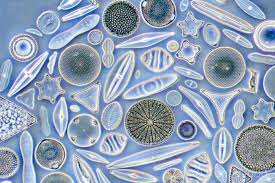
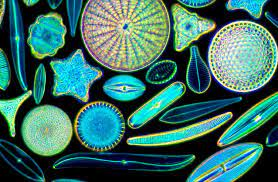
DIATOMS - unicellular photosynthetic autotrophs, silica-based cell walls (component of glass), planktonic (don’t have structure for movement)
FORAMINIFERA - unicellular amoeboid (heterotrophic) with coiled shell-like structure, found in marine environments (and in fossil form on white cliffs of Ireland)
RADIOLARIAN - marine amoeboid (unicellular heterotrophs w/ pseudopodia) found in limestone of pyramids
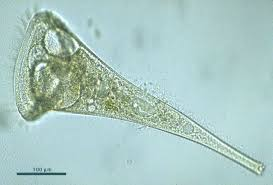
STENTOR - “trumpet-shaped” heterotrophic, unicellular ciliate
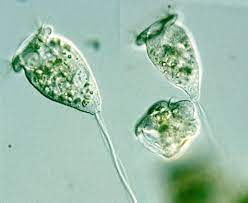
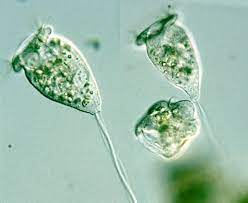
VORTICELLA - bell-shaped, ciliated unicellular heterotroph
TRYPANOSOMA - unicellular, zooflagellate (heterotrophic), parasites, often infect the circulatory system (ex. “kissing bug” transmits Chagus Disease
EUGELNA - plant-like unicellular flagelletes, have eye-spot and chloroplasts, both hetero and autotrophic
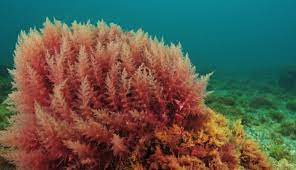
RED ALGAE - multicellular, photosynthetic autotrophs, phycoerythrin (red) pigment allows them to photosynthesize at deeper depths, found in marine environments
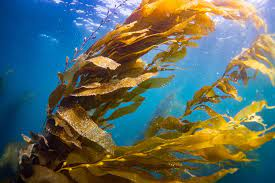
KELP / BROWN ALGAE - multicellular, photosynthetic heterotrophs, carotenoid pigments, have bladders that fill with air so it can be near the surface of ocean to perform photosynthesis
CHLAMYDOMONAS - unicellular flagellated green algae, watery environments
![<p><img src="https://knowt-user-attachments.s3.amazonaws.com/93f9b405-b58e-48c9-a67b-3f232f98de0a.jpeg" alt="knowt flashcard image" width="150" height="150"><img src="https://lh7-us.googleusercontent.com/_M9b6dmCTED3ns2-PGOX01_TRuOTGbUS1ByRfRj3jcYYuIofTmX2o7S6--PYgMBm2Rk4dXGQOesraQsmzHud_Ogb8XgY6DYGncHeEL0281QlQontSXAvsAWf8scfSDSYAvSU5iC97o7n6xfv9LVn7zE" alt="i>Dictyostelium discoideum</i [IMAGE] | EurekAlert! Science News Releases" width="234" height="138"></p>](https://knowt-user-attachments.s3.amazonaws.com/93f9b405-b58e-48c9-a67b-3f232f98de0a.jpeg)
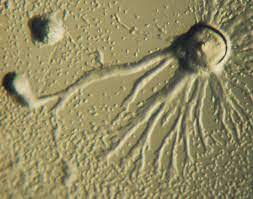
DICTYOSTELIUM (cellular slime mold) - amoeboid, has unique two-part life cycle with both unicellular and multicellular phases, single cells aggregate to form multicellular “slug-like” unit, the multicelled unit creates spores together and some cells exhibit self-sacrifice
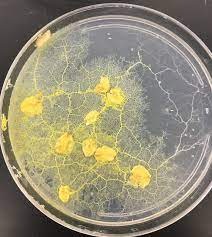
PHARYSUM (plasmodial slime mold) - amoeboid absorptive heterotrophs, unicellular but multinucleate (syncytia), builds complex & highly efficient pathways for nutrient transportation
GIARDIA - unicellular zooflagellate, parasite that infects humans through contaminated water (unpleasant gastrointestinal symptoms)
TRICHONYMPHA - termites carry this to digest cellulose, zooflagellate with 100s of flagella
SPIROSTOMUM - large unicellular ciliate with elongated “worm-like” structure; heterotroph
EUPLOTES - unicellular ciliate found in marine environments & freshwater + soil habitats
TOXOPLASMA - unicellular parasite (member of phylum Apicomplexa) found in cat guts and can be problematic for growing human fetus
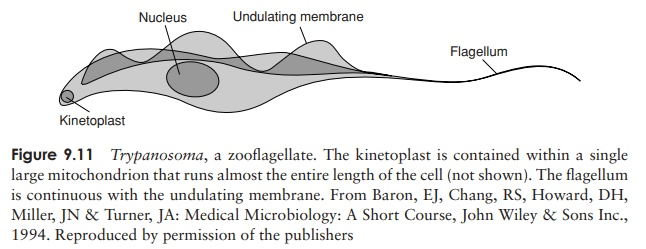
ZOOFLAGELLATES - animal like protists that use flagella to move, unicellular heterotrophs, often form symbiotic relationships with other organisms
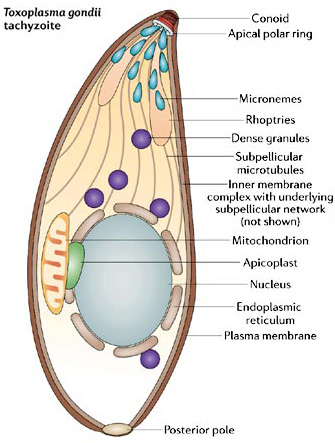
APICOMPLEXA (phylum) - mostly endoparasites (live inside host), no structures for movement, asexual & sexual reproduction, most develop spores
CYANOBACTERIA - “blue-green algae”, aquatic photosynthetic organisms that can release toxins, ancient and served as original ecosystem engineers by fixing oxygen (some can also fix nitrogen)
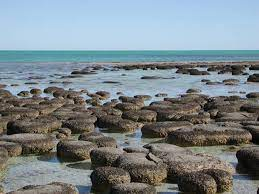
STROMATOLITES - rock-like structures composed of layers of ancient organisms, primarily cyanobacteria

EUTROPHICATION - excessive nutrient concentration in a body of water. can result in “water blooms” population overgrowth of organisms like algae → can disrupt the environment by depleting oxygen and releasing toxins